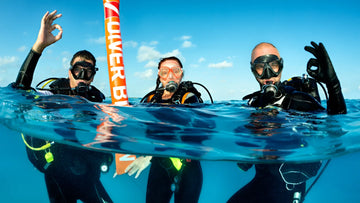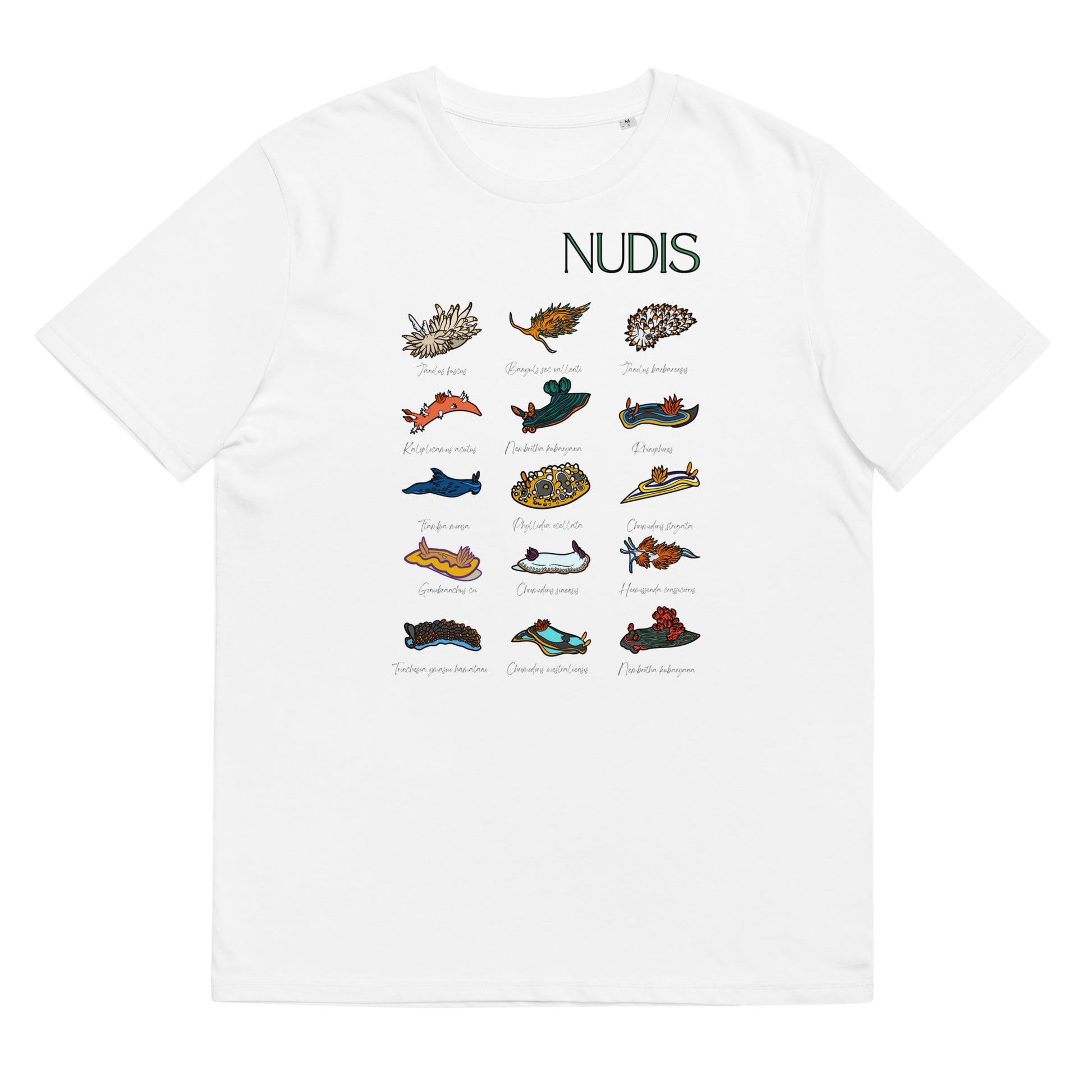When you are about to go on your first liveaboard dive trip, you will have many doubts about what to take on your first international trip. This list will serve as a guide so that you don't forget anything really useful and if you don't take it with you, it is very likely that you will regret it.
One important thing to keep in mind is that even if the cruise website or the agency description says you can rent equipment, they don't always have the accessories you need or want. Rental on liveaboards, except for the most expensive and luxurious ones, is not very reliable.
On the other hand, we recommend that you ALWAYS carry your own essential dive gear. You are the one who knows it best and whether it is in good condition, recently serviced or not. Don't expect the cruise ship to have the items you need or that they will be perfectly maintained.
Hoodies Designed for the Deck of Your Liveaboard
SEE MORE SWEATSHIRTS FOR DIVERSThat being said, let's go with the MINIMUM and MUST-HAVE dive equipment list for dive trips:
Diving trolley bag
Let's start with the continent. My first dive trip was with the Cressi Gorilla freediving bag. Yes, without wheels. It is almost impossible to fit all the equipment in it and carrying it on your shoulder or back through the endless corridors of airports is a torture. Get a dive cart with wheels. With good, sturdy wheels. Your trip will be a lot more comfortable. Most of these trolleys have special exterior and interior compartments for batteries, knives, or to keep your passport and documentation handy, which are very useful.
Diving insurance and certifications
Essential for making the trip, but it never hurts to think about it. Make sure you have a good international dive insurance policy that covers medical expenses, rescue and hyperbaric chamber, repatriation and even liability. Of course, don't forget your dive and nitrox certifications. Bring both physical and digital copies.
Dive regulator
It is not advisable to forget your regulator and hope that the one you find on the cruise is in perfect condition. Of course, you don't need a special regulator for your diving trips. Take the one you always use, the one you feel comfortable with and the one that has been recently checked. That is the most important thing. If it is also compact and small to take up less space, so much the better.
Dive mask
We have seen in other articles that it is not easy to find the right mask for you, so this item is a must for comfortable diving trips. You will spend hours with it on your face during the trip! You don't have to ask for much: that it fits well so that you don't get water in it all the time, that you can see well underwater (that's what you're after, right?), that you can compensate, that you can empty it, that you can put it on and take it off easily. That's all, but it's important. Going 10,000 km away from home to dive without a mask doesn't seem like a good idea.

BCD
Being comfortable is very important when you are diving, and there is nothing better than diving with your trusted BCD. The BCD that you know perfectly, you have mechanized where every accessory is, zipper, adjustment, pocket, and you know exactly how much air you add or remove from your windpipe with each press of the button. For me it is essential to wear my own jacket to dive with peace of mind and safety.
T-shirts designed by divers for divers
VIEW MORE T-SHIRTS FOR DIVERSFins and diving boots
Two more elements where comfort is paramount. Although you may be tempted to rent fins because of the space they take up in your suitcase, I recommend taking your own, the ones you know, both you and the muscles of your legs. A small piece of advice: if your fins still have the straps that come from the factory, the buckle ones, change them for self-adjusting latex ones, the ones that you pull and fix at the heel. After 3 dives a day you will thank me.
Wetsuit and undersuit
In fact, you don't want the suit that has been on the boat for 7 years to be used every week by a different person who doesn't take care of it and yes, pees in it (you know there are only two types of divers). Also, this email about "reserve me a size M wetsuit on the boat for when I go" is probably not going to be read by anyone. If you don't have your own wetsuit, here are some recommendations for buying one.

Keep in mind that you will be far from any dive center and the space on the liveaboards is too limited to carry 5 different types of wetsuits. Always bring your own. Use a wetsuit that is extremely comfortable and easy to put on and take off. You'll be doing this 3 to 4 times a day for a week, you don't want to spend more energy getting dressed than diving. And of course, don't wear your wetsuit for the first time on a trip, just give it a few dives beforehand.
The undersuit is perhaps a bit more personal, but remember that you get to make 4 dives a day and that slight protection of the shirt to put on and take off the wetsuit will help you to be a little more comfortable after a few days avoiding scratches and abrasions.
Dive computer
Taking a dive computer with you when you travel is absolutely essential. It is also important that it is a dive computer that "knows" you, that has made several dives with you. Again, you will be making many consecutive dives (by the way, highly recommended is a dive computer that is Nitrox compatible and certified, of course) and you need a good computer (which does not necessarily mean very expensive) with which to monitor bottom time, depths, saturation, ascent rate .... It is also a must for most serious cruises. You should not rent it and check the battery before the trip. Take it charged and extra batteries, they do not take up anything.
Surface buoy
It is important that you carry (and learn to use) a surface buoy. They are used to let the surface team know where you are after the dive, so they can come and pick you up, and so that nearby boats can see you.

On most liveaboards there is one guide for every 4 or 6 people and many times you finish early for various reasons, the guide usually stays with those who have more dive time left. It is very important to have a buoy to warn your buddies who are in the dinghy to pick you up after the dive. You may encounter waves and it is often difficult to see the small head that appears and disappears on the surface of the ocean. But this bright orange buoy is visible from hundreds of meters away. Many also use it as a substitute for a guide line to end the dive. However, you need to get one.
Dive knife
Very interesting, and in my opinion necessary, when diving. For example, on a night dive in Komodo, a national park where fishing is prohibited, I came across a net that should not have been there and it got caught on my fin. Fortunately there was no need to use a knife and I was able to untangle myself easily, but you never know when you might need it. Both you and an animal can become entangled and carrying a dive knife can literally save your life.
Non-essential dive gear that make your life easier
Although not essential for travel and diving trips, the following are items that will make your life easier while diving or during downtime between dives.
Steel pointer
The steel pointer is an incredibly useful item: you can warn by clinking on the bottle, point and above all not have to use your hand or finger to separate from the reef if your finning is not brilliant. It may not be essential, but the first time you use it, it becomes necessary.

The diving steel pointer is useful in many situations
Snorkel
It may seem bulky and not very useful, but it allows you to save air and give you a few minutes of diving. It will also help you breathe better when you are waiting for the boat, for example, and you are constantly getting water in your face.
You never know what the sea conditions will be like or how much air you will get out of the dive or how long it will take for the surface team to pick you up.
Spare diving mask
Bring an extra mask if you can. That old mask you don't use often can save a dive trip. Take it now and put it in your jacket pocket. You'll remember it when you need it. You don't want to miss a dive because you lost it at 20 meters after a flap (it happens, I've seen it several times), it "disappeared" while rinsing or you crushed it with the tank while getting dressed. The mask you don't use anymore has to go with you on every trip.
Dive torch
You paid a lot of money for this trip, don't miss any dives. Especially night dives. And to do them you need a torch. In this regard, it is very possible that you will be given one on the cruise, you can rent it or borrow it, but to make sure that you will always be able to participate in the night dives, I strongly recommend that you get a good diving torch.
Reef hook

Many of the dive trips in the most popular destinations such as the Maldives, Indonesia, Palau or any of the Pacific have some or several dives with currents. More or less strong. It is true that the current or reef hook can be purchased on many of the liveaboards, but as always, availability is not necessarily guaranteed.
The current hook is a super useful item that allows you to hang out on the reef, look into the blue and watch big critters go by. It's cheap, takes up very little space, and you can carry it in your BCD without even noticing. Tip, buy one.
Sunglasses
Very important. You will be at sea for several days, with the only shade coming from inside the ship, and you will have constant reflections from the sea. Even on deck you will not want to miss some of the most beautiful sunrises and sunsets you will ever see in your life. Sunglasses (better with polarized lenses) will allow you to spend more time on deck and you will be grateful.
Sunscreen
As with sunglasses, more than recommended. You will have little shade, it is very pleasant to be on deck, and with the sea breeze, by the time you notice the sunburn, it will be too late. In addition, on many cruises you will be going on long excursions at times when the sun is still strong. Don't skimp on factor 50 sunscreen.
Mosquito repellent
On the high seas they probably won't bother you, but if you are going on a land excursion, which is very common on diving trips to Asia, for example, it is highly recommended that you carry a mosquito repellent. In areas like Indonesia, the Philippines or Thailand, mosquito bites can be very annoying and painful.
Ear plugs
Although it may seem like it's all peace and quiet, a liveaboard has a constant hustle and bustle and rest is very important. If you're traveling alone, you don't know who you're going to have in the cabin and if they snore, they can give you a long vacation. Also remember that both compressors and engines are noisy. Very loud. You may also encounter some groups on the ship that are more boisterous and partying. You will need to rest and ear plugs will help.
Sleep aid products
Especially if you are traveling East, jet lag can make for a lot of uncomfortable moments. Remember that you have to get up to dive around 6 a.m. and if you have slept 2 hours during the night, the first dive will be tough. A sleep aid to reduce the effects of jet lag will help you get into a good rhythm from day one.
And you, do you have any other element you can recommend to help us safely enjoy each of our trips? Let us know in the comments!


























